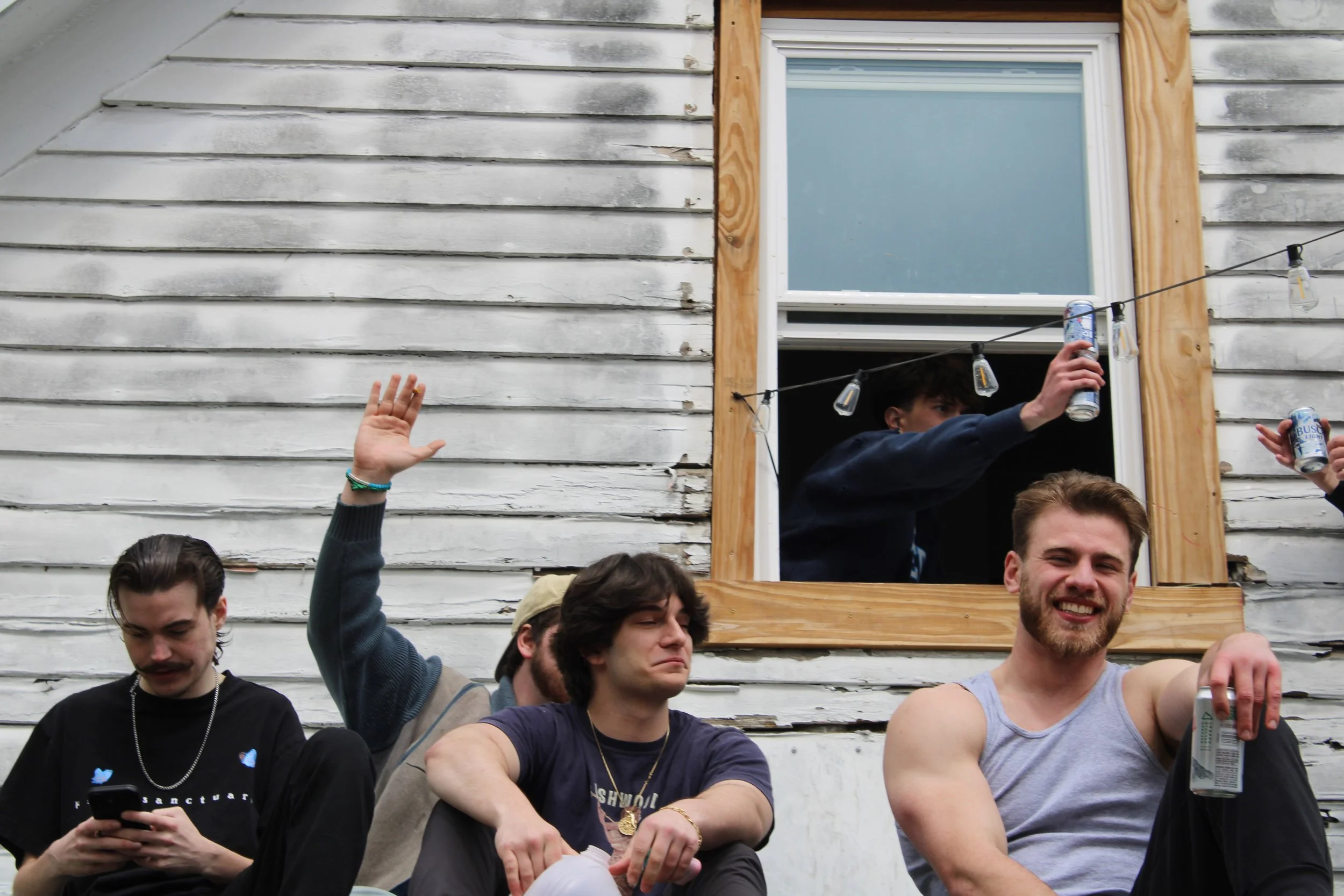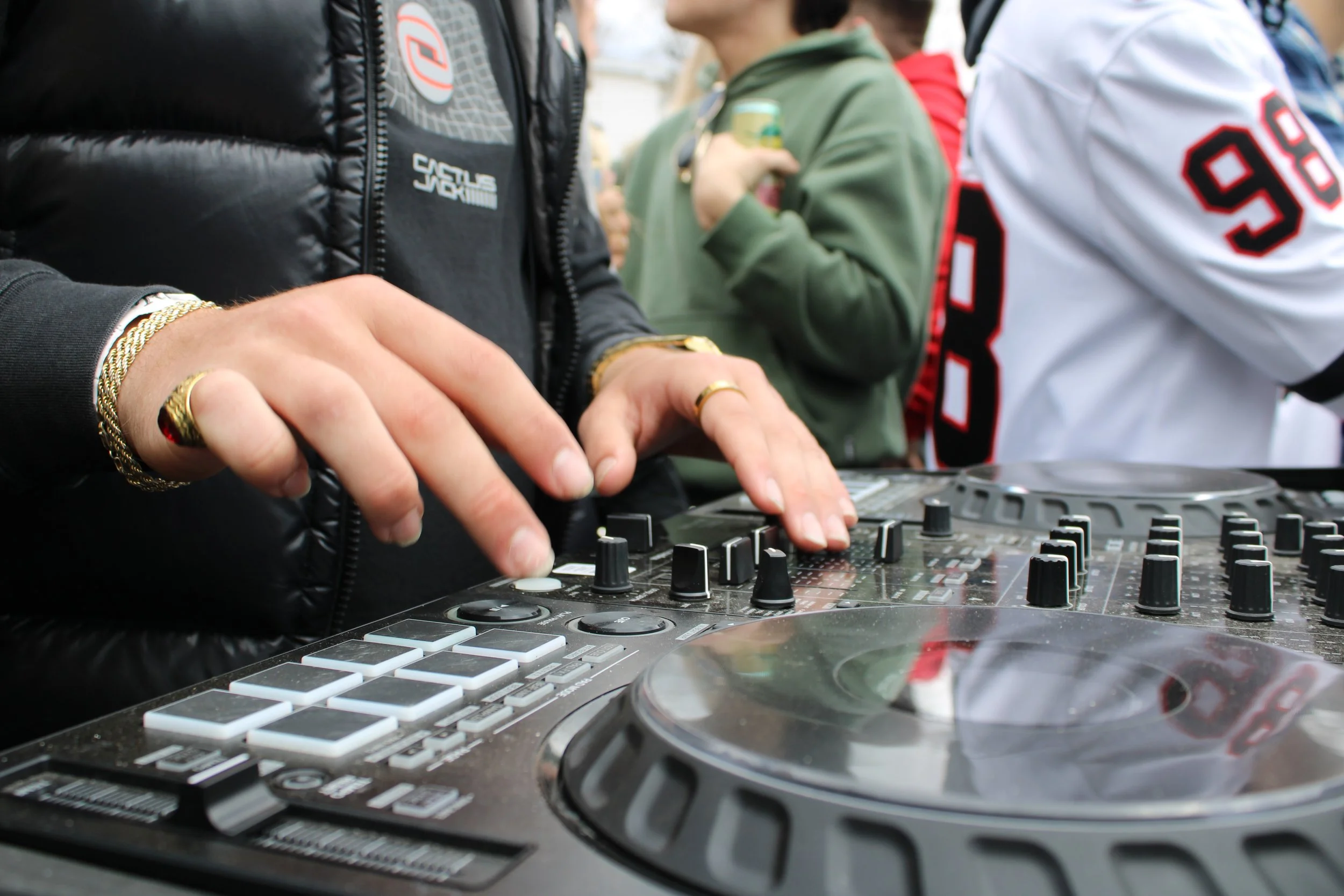A HISTORY OF OHIO UNIVERSITY’S FEST SEASON
BY LAUREN STIDHAM PHOTOS BY GABRIELLE CABANES
Ohio University, located in Southeast Ohio, has held its reputation as one of the country’s biggest party schools for years. But how has it maintained this status? OU’s infamous Fest Season has earned the college this long standing title, and the origins of this tradition are far from a small celebration.
Springfest, kicking off in the 1960s, was the fest that started it all. Jan Angilella, who graduated from OU in 1986, attended this festival annually during her time at OU, and remembers the festivities fondly.
Fest goers enjoy the party atmosphere from the rooftops
“Basically, it was a big music festival and there were some vendors as well… there were local bands early in the day, then a big national headliner closed it out,” Angilella wrote in an email. “The rest of the time we were just hanging out with everybody, drinking beer. Some people hopped in the Hocking River and others climbed the big hill across the highway.”
Intoxicated attendees, hundreds of kegs, a stage, and live performers occupied the usually secluded Intramural Fields. Each year guaranteed a new experience.
“Freshman year, it rained and The Post may have called it Mudfest... Sophomore year, it was a glorious sunny day… Junior year, Greg Kihn played about an hour while we stood there under the pouring rain… and the committee had to cancel the rest of it. Senior year was hot and sunny… the national headliner was a band called Jason and Scorchers… The local favorites, I-Tal, played after them and closed the festival…everybody was dancing and singing and just enjoying the end of what was a really great day,” Angilella wrote.
Jerry Ryba, co-chairman of the Springfest of 1986, was the head of the event alongside co-chairman Mary-Beth Fischer.
“I was the first person hired to run the event, and then we hired our team,” Ryba said. “...we hired a music director, we hired a finance director, beverage director, security person. We had a team of about 12 as the board executives (who) handled everything so that we could pass things off because (we were) still going to school.”
Organizing this event was no small task, and fundraising was done year round to ensure the event was successful.
“Back then it was all student funded and student run… all the money that we raised until the event was to put on the show,” Ryba said. “We had to raise $17,000 by a certain date, otherwise, we couldn't have Springfest because we didn't have money for staging. (If) we didn't have staging, sound, and lights and all the basics, we weren’t gonna have a show.”
The committee, knowing the party culture that reigned in Athens, organized lively events and took to the bars for contributions.
The DJs keep the festivities going with good music
“Every week we were doing an event to raise money for Springfest. We did a Battle of the Bands…the people that won the bands, they got to play at Springfest,” said Ryba. “We did big events, like “The World’s Largest Indoor Beach Party,” where we took the ice off the hockey rink and we filled it up with sand, and then the winners of the bands played there.”
They also had events such as “Jars for Bars,” in the numerous Court Street bars, where anyone could donate, and they sold buttons on the street for the cause. They also held an annual “Springfest Old-Style Softball Tournament” to fundraise for the event.
Green Fests were thrown in the weeks leading up to Springfest. These events took place in late May, marking the end of the Spring quarter for students.
“We were on the quarters system at the time: three 10-week quarters before summer. So Springfest was the culmination of Spring quarter. Leading up to it, there were Green weekends,” Angilella wrote. “Festivities started on Friday night and then continued all day Saturday and into the night.”
The cafeterias would grill steaks for students on that day, and it was a string of celebrations that prepared the entirety of Athens for the big event ahead.
The drinking law changed everything for events going into the 1990s.
“During my time, it went from 18 to 19 for beer, and then from 19 to 21 for everything… The drinking law changed the whole fest situation,” said Ryba.
After the most successful of the fests in the 1980s, “Fest Season” began to transition into what it is known as today.
Despite OU’s largest celebration fading out, the students preserved the chaotic party culture well past Springfest’s end. Dave Uhlmanseik, who graduated from OU in 1996, attended OU during the early years of the new street fests.
“(During) the parties on Palmer fest, they used to close down and barricade both ends of the street. During the day, you're all out front, and there would be some kegs on the houses. Then usually it would die around around four, maybe five o’clock because everybody was trashed,” Uhlmanseik said.”Then it would pick back up at night… and then all the houses would have back yard parties and there would be a ton of kegs and everything on the porches.”
Uhlmanseik fondly remembered the freedom of these festivities in a pre-internet environment.
“There were no cell phones, there were no cameras, so there wasn't everybody posting anything to the social network and all that. You were a little bit more free to act crazy. That was Palmer Fest where…I saw a guy standing on a roof with a beer bong that had three tubes coming off of it, nine feet long, going down to an individual standing in the driveway,” Uhlmanseik said.
The police take to horseback to keep crowds under control
Police presence today is another stark contrast compared to the older days of Fest Season.
“The only time anybody got in trouble is if you walked off of Palmer fest with an open beer…you might have gotten in trouble or napped, but…everybody left you alone,” said Uhlmanseik. “There's too many rules now, and the cops are way out of control, trying to snag as many underage drinkers as they can.”
While OU remains a noteworthy contender in the party scene of college rankings, it is a rich history of kegs and celebration that can only be accredited to the lively alumni that kept the culture alive.


